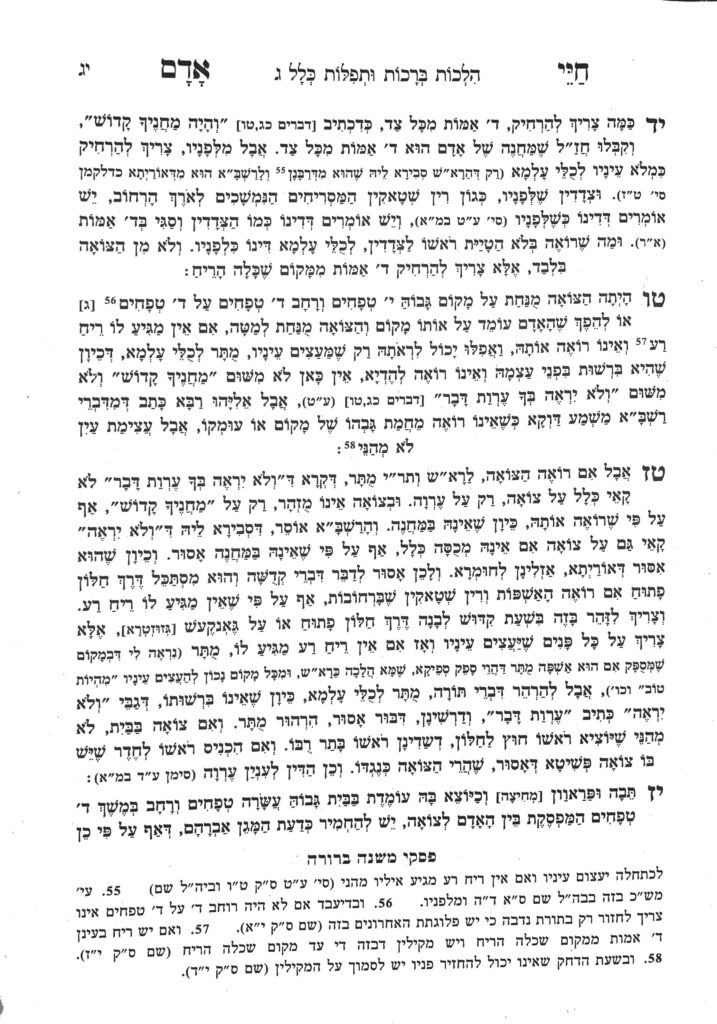We are beginning siman 15, where the Chayei Adam continues his definition of place as it regards tzoah.
The Chayei Adam writes that if the tzoah is in an area which meets the criteria of an independent reshus hayachid (10 tefachim high, 4 x 4 tefachim wide), or if a person is in such a place and the tzoah is in the regular room, if the person cannot see nor smell the tzoah, it is muttar to recite devarim shebikedusha. Even if laterally the person is within four amos, since it is a halachically separate reshus, it is considered that the tzoah is not in the person’s machaneh. If one can smell it, the tzoah has joined the person in their machaneh (shiur 1517). We apply a similar thought process to sight of the tzoah.
The Chayei Adam adds that in the case of a different reshus, even if one can see it, if they shut their eyes it is muttar. We will clarify this point further. The Chayei Adam explains that there is no issue of vehaya machanecha kadosh, because the tzoah is in a different reshus. The other potential issue, the issur of ervas davar, is avoided because they cannot see it (see shiur 1502 for more about these issurim).
The Chayei Adam clarifies that the Elyah Rabba disagrees, and holds that it is not sufficient to shut one’s eyes. In order to avoid an issue of seeing the tzoah, there must be a block between the person and the tzoah, such as different elevations, a cover, etc. The Piskei Mishnah Berurah writes that one should follow the Elyah Rabba lechatchilla, and b’shaas hadechak, if one cannot turn their body around, they can rely on the Chayei Adam. We see that even better than relying on the Chayei Adam, the Mishnah Berurah agrees that it is preferable to turn one’s body, because it is a greater avoidance of the tzoah.
An example of this halacha is someone in a car who sees tzoah outside. The car is its own reshus from the tzoah. Even if the tzoah is within four amos, if the person can turn their body, or at least their face, it is preferable. If not, one can rely on the Chayei Adam.
Summary
- If tzoah is in a different reshus, even if that different reshus is within four amos of a person, the tzoah is not a problem, provided they cannot see or smell it.
- There is a machlokes whether one can avoid seeing tzoah by simply shutting their eyes. Lechatchilla one should not rely on shutting their eyes, but if they have no choice, and are unable to turn their body or head, they may rely on it.



